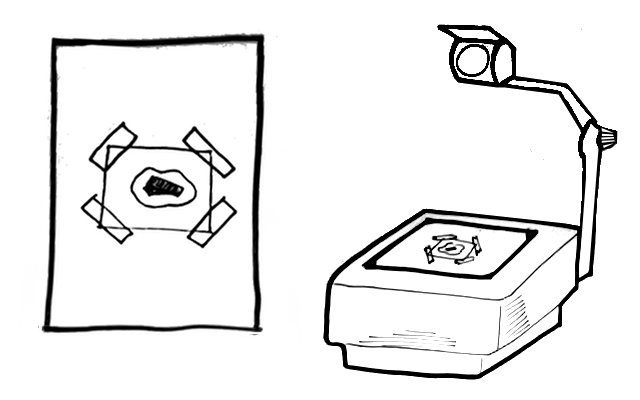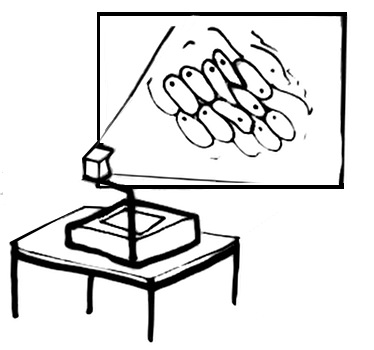Table of Contents
Low Tech Microscopy
Microscopes are powerful tools for teaching biology, and many of their bene- fits are hard to replace with local fabrications. However, simple materials can be used to achieve sufficient magnification to greatly expands students’ under- standing of the very small. They may view up close the anatomy of insects and even see cells.
Water as a lens
Water refracts light much the way glass does; a water drop with perfect cur- vature can make a powerful lens. A simple magnifier can be made by twisting a piece of wire around a nail and dipping the loop briefly into some water. Students can observe the optical properties of the trapped drop of water.
Perfect circles
Better imaging can be had if the drop is more perfect in shape – the asymmetry of the wire twisting distorts the image. Search for a piece of thin but stiff plastic – the firm, transparent packaging around new cell phone batteries works well. Cut a small piece of this plastic, perhaps 1×2 centimeters. Near one end, make a hole, the more perfect the better. The best hole-cutting tool is a paper hole punch, available in many schools. With care, fine scissors or a pen knife will suffice; remove all burrs.
Slides
A slide and even coverslip may be made from the same plastic, although being hydrophobic they will not have the same properties of glass when making wet mounts. Improvise a method for securing the punctured plastic over the slide; ideally the vertical spacing can be closely adjusted to focus.


Backlighting
On a bright day, there may not be any need for additional lighting, but in most classrooms the image will be too dim to be easily seen. The sun is a powerful light source, though not always convenient. Flashlights are generally inexpensive and available; many cell phones have one built in the end. To angle the light into the slide, find either a piece of mirror glass, wrinkle-free aluminum foil, the metalized side of a biscuit wrapper, etc.
Experiment with a variety of designs to see what works best given the ma- terials available to your school. If you use a slide of onion cells stained with iodine solution (see Sources of Chemicals), your students should be able to see cell walls and nuclei.